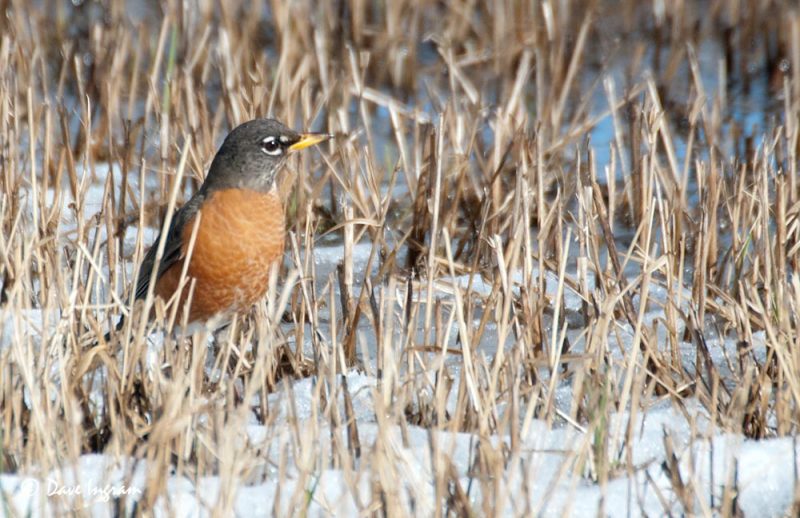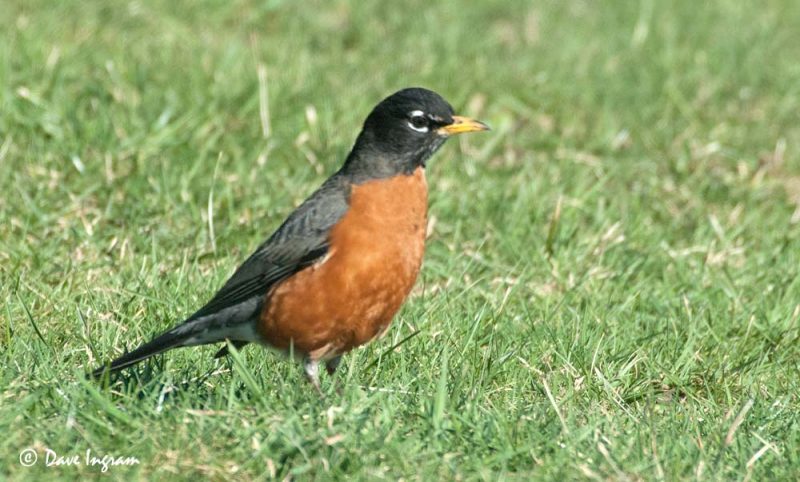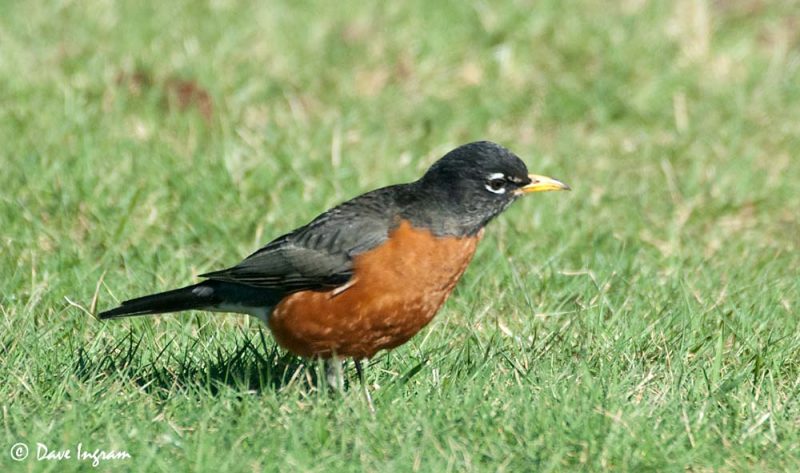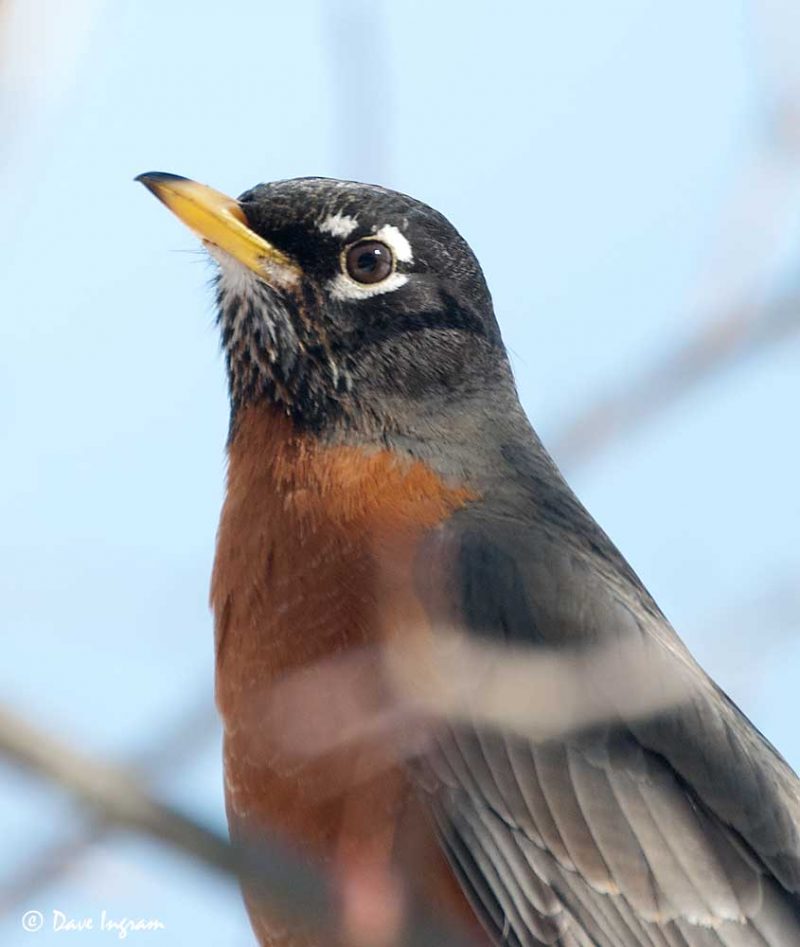
I’m not sure whether it’s the weather but there seem to be more American Robins (Turdus migratorius) around lately. On my regular lunchtime walk this week I came across a large flock of close to thirty robins on a snow covered field. This was a day or two after the last spring snowfall and the robins were taking advantage of the open water in a low part of the field. Most of the other water sources in the area were frozen over so the water logged field became a destination, an oasis of sorts, for this flock.

Robins can be seen year round on Vancouver Island but they’re a little harder to find in the dead of winter. They always turn up on Christmas Bird Counts but not in huge numbers. As we move into spring they start to become more conspicuous – one appeared in our back yard this week and occasionally I’ll see one out outside my office on the lawn looking for worms.

Robins are fairly easy for most people to identify – the cheery orange/red breast is noticeable and contrasts with the darker head and gray back. The foraging behaviour of the American Robin is distinctive, an irregular hopping through short grass punctuated by short low flights and lots of staring at the ground motionless with its head cocked to one side.

While it looks like the robin is listening for worms, research indicates that they may actually be looking for signs of worms digging. Robins will generally eat more earthworms in the early part of the day (getting a good protein load) before switching to fruit (if available) in the late afternoon. Invertebrates like worms, beetles and caterpillars make up less than half of the bird’s diet – a majority of the diet is fruit. During the winter when there is snow on the ground and worms aren’t available they have to be creative.

A common bird, but nonetheless it is nice to see them a little more regularly. These ordinary thrushes are sure sign that spring is on its way!
View more bird photography at Bird Photography Weekly!